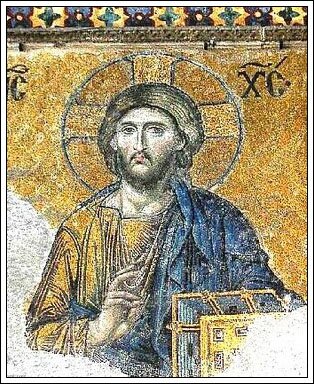Top 10 Examples of Religious Persecution
Suggested by SMSReligious persecution is a common occurrence in the history of man. Being abused, mistreated or even killed for having a difference in religious beliefs, connections or lack of them, is all too common; even in many lands today. One’s religious views can be seen as a direct extension of their moral fiber. When it comes to some cultures, this can become a significant issue.
Many things can result in religious persecution, especially in lands where the State imposes its views on citizens. Anyone bold enough to publicize their opposing views is often criticized, shunned and even viewed as a threat to that States security. Socially, demeaning the religious view of any group can lead to violent uprisings, at the least. Unfortunately, the violence that religious persecution has led to in many lands has become so bad that it can be referred to as a human rights issue.
10. Africa’s Cry for Religious Freedom
Even today, religious persecution exists. Over the span of more than 10 years, starting in the late 1990’s, more than 12,000 Nigerians died in the violent war between Christians and Muslims. Nigeria is located on the nation’s fault line. To the north, the population is mostly Muslim. To the south of the fault line, the population is mostly of the Christian faith. To date, no one has been charged, convicted or sentenced in the deaths. This is merely a small stain left by religious persecution in today’s day and age.
In Eritrea, another African nation, those citizens that follow the Catholic, Muslim, Orthodox or Evangelical faiths are safe. Often people who have beliefs outside of the four are persecuted. A registration system was formed that made it mandatory for groups, outside of the aforementioned faiths, to provide information about themselves in order for them to worship. In addition, aside from the four faiths that have been listed, none other is recognized. Human rights groups often complain to practitioners about the many people throughout the African states that are being harassed and persecuted because of their religious beliefs.
Religious groups are forced to meet in secret. They have to meet in small groups to avoid the chance of someone going to the authorities. There have been beatings and arrests. Force and intimidation is even used to convert members of other faiths to those faiths that are accepted by the Eritrean leaders. Otherwise, they are declared as enemies of the state.
9. American Outcry

Not only is religious persecution still a problem on the western hemisphere, it can still be found in the United States as well. Although less likely to be heard of and often non-violent, instances of religious difference can be found throughout the country. Many people who live in the country may not agree with some beliefs, yet they have learned to be more tolerant. Still, there are some beliefs which are misunderstood, resulting in scrutiny.
Since the events of September 11th, 2001, it is believed that the Muslim faith is the most persecuted. Ignorance to the faiths true meaning, Muslim followers find themselves clumped with the maniacal sector responsible for terrorist attacks around the world. Ignorance has given way to fear. Fear has given way to insecurity. Insecurity has given way to anger. And anger has given way to retaliation.
8. Falun Gong
Falun Gong translates to “Law Wheel Practice”. It is also known as Falun Dafa. This spiritual system first came to China in 1992 and was introduced by Li Hongzhi through his many public speeches. This spiritual discipline is a combination of meditation and qigong movements, which focus on moral viewpoints. Truthfulness, compassion and forbearance are all virtues that are stressed.
One of the most recognizable differences in Falun Gong is that it lacks many of the other aspects of spiritual systems common to China. For example, there are no fees associated with membership, no daily worship rituals to follow and it’s primarily focuses on moral teachings, in addition to teachings of theological nature. Many western brains have referred to Falun Gong as a movement that is based on the spiritual teachings of its founding leader.
In the beginning, the practice was supported by Chinese officials. However, in July of 1999, the Communist Party of China imposed a ban on Falun Gong. Three months later, the Party declared the practice a heretical and banned internet access to any website that so much as mentioned the practice. Groups that focus on human rights have since admitted to the abuse and imprisonment of practitioners. Those imprisoned have been forced into labor and suffered abuse of various natures.
7. Martin Luther

This German priest is an icon in the Protestant Church. A theology professor, he openly opposed the idea that one can escape God’s punishment with money. In 1517, his written work, Ninety-Five Theses; he called out the salesman responsible for the spreading the ridiculous thought. Pope Leo X ordered the author to withdraw his statements, in 1520. A year later, at the Diet of Worms, the same was done by the Holy Emperor Charles V. His refusal on both occasions led to his excommunication from the Catholic Church and being titled and outlaw by the Roman Emperor.
Martin Luther translated the Bible into the people’s language, Latin. He also spoke of salvation as being a gift from God and not something that can be purchased with money or good acts. His teachings were a direct challenge to the authority of the Roman Catholic Church and sacerdotalism; by declaring all who are baptized as a part of a priesthood of holiness. Those who followed the teachings of Martin Luther are referred to as Lutherans.
In his last years, Martin Luther was anti-Semitic. He called for the destruction of Jewish homes and synagogues and the seizure of their monetary resources. This led to many of the controversial debates that are still held about him today.
6. Charlemagne’s Pagan Persecution
Charles the Great served as the King of Franks from 768 and the Emperor of the Romans from 800, until he died in 814. Known as Charlemagne, he was astonished when Pope Leo III crowned him. He spent many years, using military force to expand his Kingdom. Eventually, it would include a large portion of Western Europe. Those who were conquered were forced into Christianity.
Between 774 and 804, the Emperor was continuously at war with the Saxons. He made it a point to make them aware of the fact that he would kill any of them, who did not convert to Christianity. By the end of wartime, Charlemagne had achieved his goal. Missionaries were sent to teach the Saxons the laws of their new religious faith.
5. Stalin’s Deadly Rule

Sadam Hussein’s idol was no stranger to committing religious persecution during is horrific rule. Iosif Vissarionovich Dzugashvili, commonly known as Joseph Stalin, became the Premier of the Soviet Union on May 6th 1941 and served until March 1953, when he died. He supported the religious view of his predecessor, Lenin; believing that religion had no place in an ideal communist society. The government that he ran promoted atheism in an effort to make that perfect society, a reality. Atheism was taught in school and there was a horrid campaign against any religious belief and its followers. By the time the end of the 1930’ had come around, being associated with any form of religion was deadly.
The Russian Orthodox Church was almost obliterated as a result of Stalin’s ongoing revolution against religion. Congregations began to dwindle, churches were torn town and tens of thousands of religious works were killed; more than 100,000 were shot in a one year period. Just before he died, Stalin outlawed the following religions like Baptist, Judaism, Islam, Buddhism, and many more. Monks and nuns persecuted; while religious monuments, temples and other artifacts were burned to the ground.
4. Hitler’s Horrendous Hatred
Adolf Hitler once supported positive Christianity, a strict, non-denominational sect of Christianity. In this form of the religion, Christ was am organized preacher that opposed Judaism. All Jewish aspects of Christianity were removed from the religion and replaced with more radical, anti-Semitism. Unbelievably, the terrorist never aimed his hate attacks on Jesus Christ. It may be because he viewed the religious figure as an Aryan that was against the Jews. Hitler considered the traditional form of Christianity as an exploitation of Jesus’ original intentions, as passed on by his apostle, Paul. By 1940, Hitler’s support of positive Christianity no longer existed.
The world is all too familiar with Hitler’s heinous crimes against people for their religious beliefs and affiliations. He single handedly orchestrated the deaths of more than 6 million Jewish people as a result of his anti-Semitism. Although he was also responsible for deaths based on racial discriminations; it’s his hatred for Judaism that lands Adolf Hitler on this list.
3. Constantine
Christianity was the dominating faith when Constantine became ruler of the Roman Empire. After the Battle of Milvia Bridge, he had a life changing experience. No one has ever found concrete reason for his dedication to the Christian faith. In addition, no one has ever been absolute as to which form of the religion he converted to. However, he is still considered a saint and Christian Monarch in both the Eastern Orthodox Church and Oriental Orthodox Church.
In 313, Constantine legalized Christian worship by issuing the Edict of Milan. His actions and beliefs led later Emperors to deem themselves spiritually responsible for the people they led. Their jobs were to enforce doctrine that was handed down from bishop, alleviate heresy and keep the church unified. Constantine’s view points on religion evolved during his time as Emperor. In the beginning, he banned any new temples from being built and refused to tolerate the practice of traditional sacrifices. However, by the time his reign was nearly over he had given instruction to destroy Roman Temples.
With the construction of his new capital, Constantinople, the Emperor began to reject all things that were not of the Christian faith. Ironically, he plundered the treasures and statues of pagan temples to decorate it. Many Hellenites were arrested and executed. He even ordered the death of anyone caught worshipping idols.
2. Bloody Mary (Mary Tudor)

Many would think that this Queen of England and Ireland would be most remembered for her work to restore the Roman Catholic Church after its stint with the Protestant faith. However, it’s the acts that she committed while enforcing the reform that earned her the nickname, Bloody Mary. In the five years that she reigned, Mary was responsible for more nearly 300 religious rebels being burned at the stake, these deaths are known as the Marian Persecutions. Although she was successful in re-establishing the Roman Catholic Church, her half-sister reversed the decision when she ascended the throne upon Mary’s death.
1. Jesus of Nazareth
Often referred to as Jesus Christ, Jesus or Christ; this is the man at the center of the Christian faith. A result of Immaculate Conception, he is believed to be the incarnation of the son of God. Three days after his crucifixion, he is believed to have risen from the dead.
Jesus spent is life teaching and preaching the ways of the “one true God”, his father who resided in Heaven. The word and works that Jesus was spreading, with Pontus Pilate or any of the high priests. However, it was the accusation that he had proclaimed himself the King of Jews that led him to be tried. Due to his place of birth, Pilate had no jurisdiction and handed Christ over to King Herod.
Jesus didn’t answer any of the questions or respond to the accusations once he came before the King. He was mocked, and with a beautiful robe placed on him, returned to Pilate; being found innocent of any wrong doing. Pilate makes his mind up to have nothing more to do with the man from Galilee, after his wife has a horrible dream. Yet, he orders Jesus to be nailed to the cross for blasphemy to appease the desires of an angry public.
He is whipped and a thorn of crowns is place upon his head. After carrying his cross to the top of Mount Golgotha, he is nailed to it.
As you can see, religious persecution is nothing more than an oppressive act. If it were meant for all people to believe the same things…would we not have been created with the same brains? How long will it take for those in positions of power to understand that eventually the subjects of their oppression will grow tired of being victimized? How long will it take those being victimized to find a way to break free?
For so long, so many people have been robbed of so many freedoms. If one man wasn’t better than another because of the color of his skin; can he be better than him because of his faith? There are two themes that seem to be prevalent in almost every religion known to man; love and peace. How much peace can there be if one man can’t love another, simply based on which or how many God’s they serve? Is anyone’s God really happy with their behavior towards another human being? Most of all, does anyone really believe they’re guaranteeing their place in their faith’s Eden by exhibiting what can clearly be called hatred?















